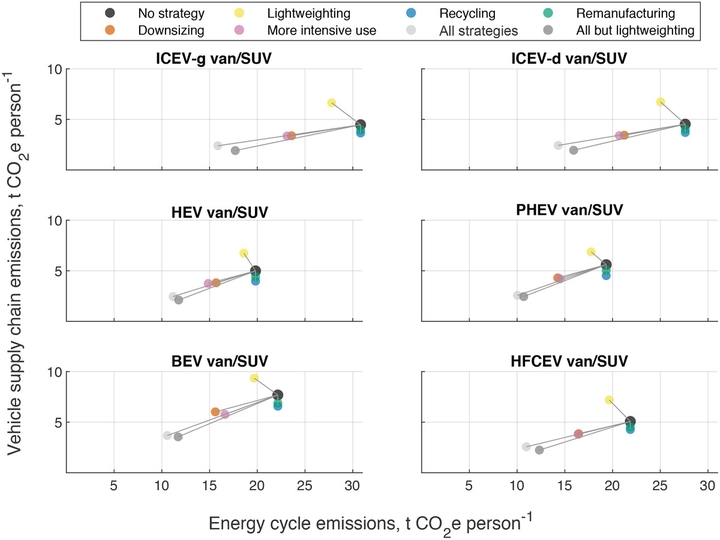Material efficiency and climate change mitigation of passenger vehicles

Abstract
A transition to electric vehicles and renewable energy is currently underway but may not be rapid enough in order to reach ambitious climate change mitigation targets. Therefore, additional, preferably instantaneous, measures are needed for quick emission reductions, which is where material efficiency (ME) could constitute a promising solution. ME strategies include but are not limited to vehicle lightweighting through material substitution, increased recycling of materials, reuse and remanufacturing of vehicle components, vehicle downsizing (switching to a smaller vehicle), and more intensive use by means of increased vehicle occupancy through sharing practices. While recent analyses have focused on a narrow subset of ME strategies, we find striking differences in the overall potential of different measures to decrease vehicular carbon footprints. Downsizing and more intensive use offer the largest mitigation potential but strongly depend on consumer behavior and are highly sensitive to modeling assumptions. Combined, the analyzed strategies can achieve emission reductions of up to 57% over the life cycle of a single vehicle, which is comparable to up to 83% achieved through a shift to low‐carbon energy supply. ME can cut carbon footprints of already efficient vehicles charging renewable electricity by half again. This makes ME both an excellent short‐term solution for climate change mitigation targeting the light‐vehicle sector but also an important complementary strategy to the long‐term transition toward electric vehicles and renewable energy supply.